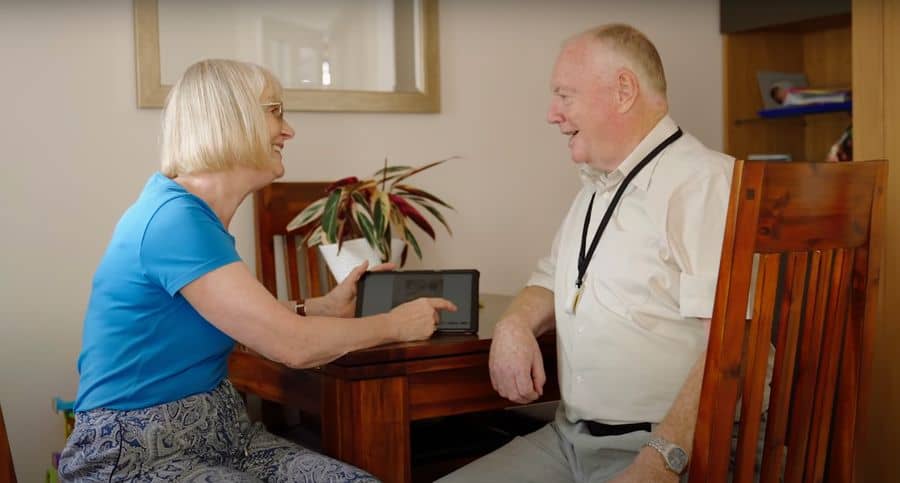Extending telecare services to over-75s could save the UK over £14bn over the next decade
Extending telecare services to more over-75s could save the UK’s care providers £14.5 billion by the end of the decade, new analysis has found.
Economic modelling from digital connectivity consultancy FarrPoint estimates that there are currently two million people using telecare services in the UK, but an additional 800,000 could benefit from access to technology-enabled care across the country, based on findings from Deloitte’s ‘Telecare Feasibility Study’.
Using the latest ONS population projections, this figure is expected to swell to nearly one million people over the next decade, and could result in further strain to the already challenged care sector unless action is taken by care providers to increase uptake of telecare services, FarrPoint says.
In addition, FarrPoint assessed the benefits and cost savings offered by increased use of telecare services finding that encouraging more over-75s to use telecare services could result in benefits worth more than £14.5 billion to the UK by the end of the decade.
FarrPoint calculated this figure by assessing the benefits versus cost savings of telecare services for a region with around 2,000 users in England.
It found that for this sample, access to technology-enabled care (TEC) services could result in nearly £22 million in cost savings over 10 years. If these figures are replicated for the UK as a whole, this could suggest benefits of over £14.5 billion over the same time period, according to the firm.
When broken down by country, this could generate benefits of £12.3 billion in England, £1.1 billion in Scotland, £717 million in Wales, and £370 million in Northern Ireland over the same time period – the equivalent of more than £10,000 per service user, per year.
With the UK’s elderly population set to increase by a quarter by 2030, care providers responsible for TEC services are being urged to ensure the benefits of telecare are understood and promoted further in a bid to drive service up take.
Matthew Izatt-Lowry, Senior economist at FarrPoint, said: “These numbers make for sobering reading for health and social care departments up and down the country.
“As a nation, we’re facing huge demographic changes, and by 2030 there is expected to be more than 7.3 million people aged over 75 in the UK. This will place even more pressure on the public purse and on the social care system in the UK which is already more stretched that ever before.
“Care providers must act now to help avoid the looming care crisis, and consider how technology can help the sector cope with increasing demand.”
Telecare services offer remote care for individuals, typically elderly people and those who are physically less able, providing reassurance and allowing them to live independently via various assistive technologies.
These are often a pendant and lifeline alarm unit, where the call is transmitted to an Alarm Receiving Centre (ARC), with more enhanced ‘packages’ of care including devices such as door, bed and automatic fall sensors used to ensure safety at home.
The benefits of telecare services can be offered across the social care system, FarrPoint highlights, including delaying residential care admission; improving social inclusion, wellbeing and community resilience; and alleviating bed blocking and hospital admissions, all of which factor into the cost savings the UK could expect to receive by increasing uptake.
The economic modelling follows FarrPoint undertaking the first-ever national analysis into telecare across Wales for TEC Cymru, the programme responsible for supporting the shift to technology-enabled care in Wales.
The analysis found that more than two thirds of councils are using the move from analogue to digital technology to enhance their telecare service offering, with demographic changes, a desire to improve and extend services, and better integration between health and social care bodies being named as the main drivers for change across the country.
Many local authorities in the UK are realising the benefits of technology-enabled care (TEC) services, which highlights a growing number of opportunities for telecare providers.
For instance, East Sussex County Council commissioned Doro Care UK to provide a telecare service model and welfare call checking service for local residents in response to the coronavirus pandemic and the need to reduce face-to-face contact.
Similarly, Cardiff Council is working with HAS Technology, as part of the local authority’s telecare response service, to provide residents with innovative wearable solutions that can help to identify certain health risks early on.
In April 2021, Falkirk Council became the first local authority in Scotland to go live with an end-to-end digital telecare service.
https://thiis.co.uk/extending-telecare-services-to-over-75s-could-save-the-uk-over-14bn-over-the-next-decade/https://thiis.co.uk/wp-content/uploads/2022/02/Telecare-user-image-2.jpghttps://thiis.co.uk/wp-content/uploads/2022/02/Telecare-user-image-2-150x150.jpgNewsroomReports & ResearchSector Newscare,digital,elderly,England,FarrPoint,over-75s,technology,TelecareExtending telecare services to more over-75s could save the UK’s care providers £14.5 billion by the end of the decade, new analysis has found. Economic modelling from digital connectivity consultancy FarrPoint estimates that there are currently two million people using telecare services in the UK, but an additional 800,000 could...Liane McIvorLiane McIvorliane@thiis.co.ukEditorTHIIS Magazine


